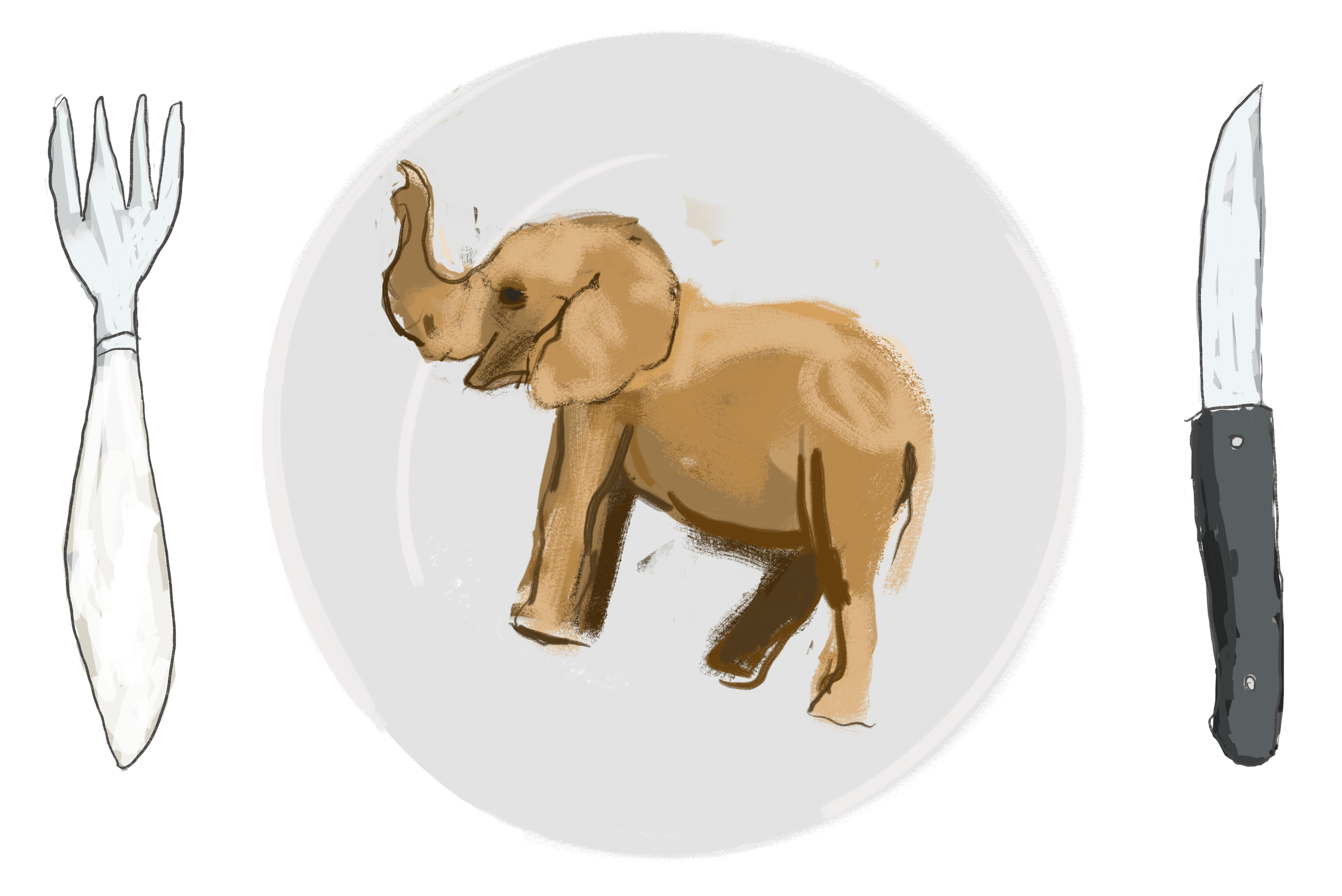Three bites, one elephant
How small-scale research has helped me reduce uncertainty in our mus.
Do you work with an elephant in the room?
Not literally, of course. But something so big, you can’t get away from it. You try to ignore it, but it’s always in the way. You’ve tried to tame that elephant, but you don’t have the training, so you keep throwing resources at it, hoping that will help. Then, when you run out of options, you make one last-ditch effort to get rid of that elephant by eating it in one big bite.
My elephant is marketing. For years I have struggled with it at my small museum. I’ve made plans. I’ve spent marketing dollars. And I’ve certainly tried eating it whole. But nothing has been very effective.
I know the adage on how to eat an elephant — one bite at a time. But where do I start? Finally, an answer came along. It was the small-scale research lab in the Museums as Progress community. What is small-scale research, you may ask? It is speculative evidence gathering used to reduce uncertainty and help make better decisions. The lab provided a recipe for my elephant. I could serve up my dish and take my first bite.
Bite one: Come up with a tightly defined question to research. “How to spend a marketing budget in the most effective way possible to reach the most people who are likely to visit, join the museum’s membership, purchase from the store, etc.”
Bite two: Gather data. I chose to use a survey focusing on how small museums market themselves. From December 2021 through mid-January 2022, I received one hundred responses. Participating museums spanned all six museum regions across the United States, plus ten museums outside the USA, including at least one representative from the following countries: the United Kingdom, Italy, India, Canada, and New Zealand.
Here is what I hoped to learn from my survey:
What marketing channels are being used the most?
What marketing channels seem to work the best?
How are others tracking/measuring their marketing results?”
Bite three: Analyze the data. Did I learn what I had hoped? Mostly. You can see my findings here.
Thanks to small-scale research, I have served up the first course of my elephant. I still have a lot left to go, but I now feel more confident in moving forward in marketing my small museum.
Susan

